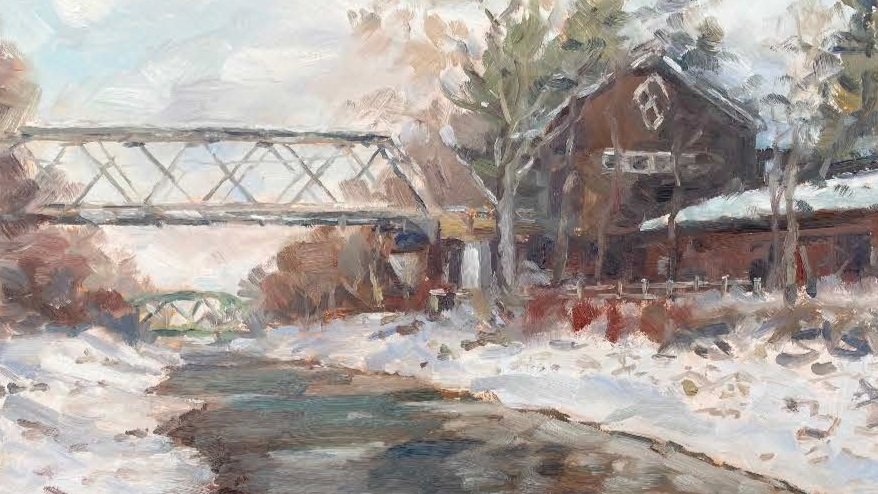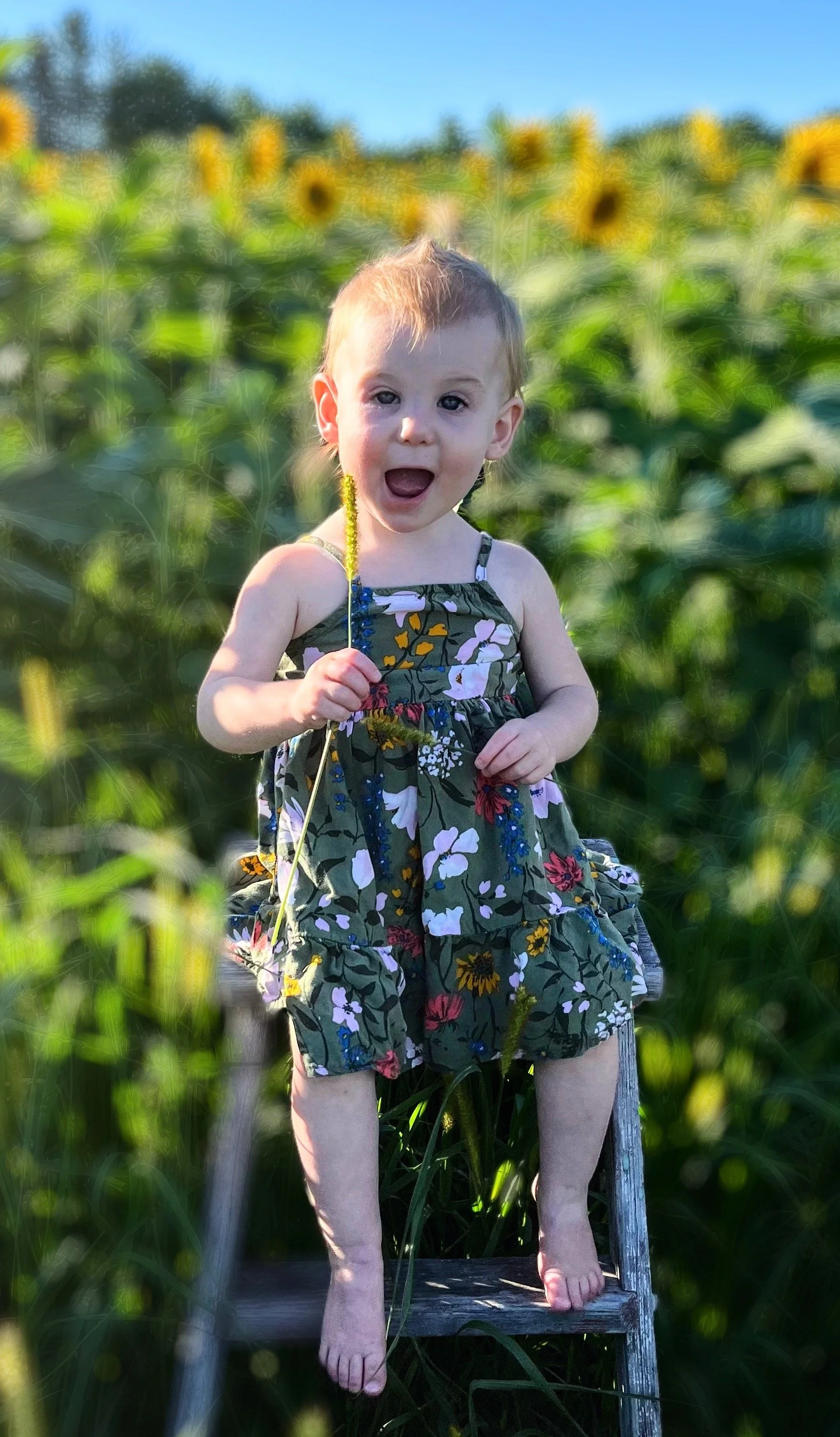
About
Snowy Banks of Erie Canal ~ painting by Tim Winter
I am a writer with experience as an interpreter. The challenge of interpreting, and writing, is to transfer meaning. With interpreting the transfer of meaning is from one language to another. Memoir writing is examining life experiences to uncover and share meaning.
I believe storytelling can empower personal and societal transformation.
After twenty years of working as a signed language interpreter I have embarked on the transition to a writing life. This is not my first transition - I was a legal secretary, before staying home and raising four children, and then a photographer before studying interpreting.
I was a nontraditional student - graduating with an AAS, BA, and Master’s degrees at the age of 40, 50 and 54. I have been working on a “DIY MFA”. Next I’m shooting for an honorary PhD in literature!
My mottos are ‘“loving response” & "both/and".
I love to travel and stay home. My favorite souvenirs are the travel photos I’ve taken. Closer to home, my favorite ‘portrait subjects’ are my grandchildren. The second best day of each year is 'travel day' and gratefully the best day is returning home.
Home for the last eight years has been a converted granary and bull barn circa 1856 on the 'psychic highway', aka the Erie Canal (see painting above). Rather than downsize, I convinced my husband of 42 years to up-size! For the last eight years we have thoroughly enjoyed multi-generational living. In the future a few of our grandkids will be able to reply in the affirmative if asked, “Were you raised in a barn?”
More on the influence of interpreting studies on my writing.
As I’ve told students, learning sign language interpreting was three times harder than I expected, and I enjoy it ten-times more than I imagined. Not unlike writing!
Lifelong learning (two languages!), ethical decision making, cultural mediation, processing skills (the sub-skills; listening comprehension, paraphrasing, etc.), the creative process of interpreting (not word-for-word but rather transferring meaning) and the cognitive challenge are among the things I love about interpreting.
Learning about the culture of Deaf people has been a privilege. It has also lead me to a deeper understanding of myself.
What did I learn about myself, an adoptee from Ireland, from people who are Deaf?
A lot. As complex as that answer is, fortunately there is a book - a 700 page book - that explores families with children with characteristics that are different from their parents. As an international adoptee from Ireland, I felt like I passed as being the same as my parents and struggled with my identity.
Far from the Tree by Andrew Solomon is subtitled, Parents, Children and the Search for Identity. Solomon interviewed over 300 families with “exceptional” children. He uses the term horizontal identity for the children who in various ways, including being Deaf, identify differently from their parents. Ninety percent of Deaf children have hearing parents and may be assisted by Deaf peers to develop a healthy self identity.
I learned from the study of Deaf culture and personal stories of Deaf people that it was a connection to the Deaf community that often played a major role in shaping their identity (horizontally) rather than parents (vertically).
This understanding validated the effort I was compelled to give to trace my birth, early life, care and medical information - and to share the journey to appreciating my origin story.
More on the my mottos — loving response, both/end,
Ah, a loving response~or have something very nice to say. A priest once told the congregation, “If it weren’t for you parishioners, I would always be kind and loving.” He went on to say he heard variations of the statement every week: “If it weren’t for these damn kids…” I’m as challenged as the next person and have various practices to try and be kind and loving in face of life’s challenges. My personal shortcut to recognize other peoples humanity is to have a loving response. I have a friend who prefers, “Don’t be an a@#hole.” I like to think of a loving response as an advanced version of, “If you don’t have anything nice to say….”
Either/or thinking can burst into my life and the more stress, the more catastrophizing I can do. But in my saner moments, I realize my experiences are rarely black and white. I absolutely love when I can review priorities and reframe a decision to a both/and approach. A recent example...
I was presented the opportunity to do interpreter training in Cambodia that would pull me off my ‘writing game.’ My husband commented, “Shiny things!”
He wasn’t wrong. I’d stopped teaching to commit more time to writing. Months of preparation and online trainings and two weeks on site would impact my writing schedule, but the most rewarding work I had ever done was a similar project in Vietnam. Both/and thinking prompted me negotiate a smaller role in preparation and paperwork for the project. AND I made a plan to commit more time to writing on my return. I used proceeds from the work to fund resources I had been eyeing - the financial commitment strengthened my time commitment. I worked with wonderful colleagues in Phnom Penh (& visited Angkor Wat temples!) AND returned home reinvigorated to write.
Both/and - win/win!
More on being a homebody with wanderlust.
If someone had told be I would not move farther than 10 miles from my high school, I would have been crushed at the thought. But I ended up appreciating having roots here in upstate New York. Visiting family in other parts of the country only increased my awareness of the benefits that the not-too-big, not-too-small city of Rochester offers; slow pace compared to NYC, a ridiculously easy commute, beautiful surroundings, and I find the cycle of the season’s restorative.
While I’ve been happy to make it home, I’ve long desired to travel too. My first attempt proved a bit too ambitious. At seventeen my parents shot down my request to participate in an exchange student program. My father was amused that I wanted to go to Australia rather than my local high school that was walking distance from our house.
When I was back in college for a bachelor’s degree at the age of 50, my program of study instituted an student exchange program with a university in the Netherlands.
I posted on Facebook, “If you live long enough, all your dreams can come true!”
A few years later I counted how many time zones I crossed in 9 months. It was around 60. I have my sights set on circumnavigating the globe and finally going to Australia among other places.
More on the joys of intergenerational living.
The converted granary on the canal.
My studio and the bull barn.
When I was in high school I took an interior decorating course - part of an artist-in-residence program. A field trip to a stately property across the street from the brown barn on the canal ignited my passion for the unique property. Fast forward nearly five decades and we purchased it. Our path to intergenerational living began!
Arguably this was not a step in the right direction, the plan being to down-size from the home we raised four children in. But as my son said when he viewed the house, “This is beyond Mom’s dreams. It is more like she conjured this place!” And I knew Scott, my husband, would appreciate the smaller yard and the towpath along the canal for running and biking. One of my favorite features is being walking distance from the village library. So while we diverged from the plan, the bull barn could accommodate our son who was looking to rent. In short order his family expanded and we’ve had the joy of two grandchildren growing up next-door. Having all three grandchildren living locally is spectacular. They amuse me and I amuse myself with capturing images of their playthings around the house.


















